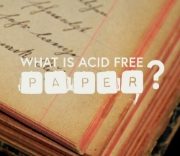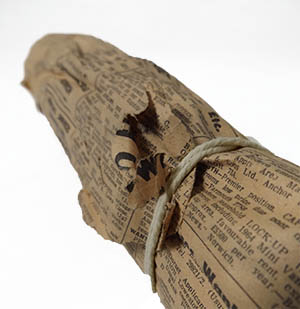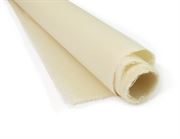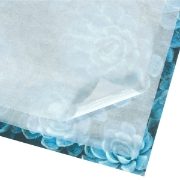Untitled Document

What is ‘Acid Free Paper’ and why is it important?
Acid free paper, sometimes referred to as ‘Archival paper’ is a specialist material which takes a few forms and serves various purposes.
Read more to discover what acid free paper is and why you need it?
> | View all acid free paper and board click here


Is ‘normal’ paper acidic?
Standard paper made from wood pulp is indeed usually acidic, and becomes increasingly so the older it gets. The natural deterioration of Lignin (a natural part of plant cells in paper) causes the paper to become acidic and break down.
This makes most cheap ‘normal’ paper and card unsuitable for long term use and storage. From the moment it is made, the paper is gradually breaking down. You will see this quite quickly in the cheapest papers, like newsprint, which will turn yellow and brittle very quickly due to it being made of the cheapest unrefined pulp.
Acidic paper is bad because?
Acidic paper will turn yellow and brittle and break down quickly (relatively speaking). Acidic paper will also introduce acid to items stored with it, or in it (like photographs, art, certificates etc.) potentially damaging them too. This means if you’re planning to store it, print on it, paint on it, display it, protect with it, and for it to survive for decades maybe centuries to come you need to use acid free paper.
What other factors make paper acidic or speed up the process?
UV light and heat will speed up the chemical process that causes the degradation of paper. You’ll see this on the edges of the pages of books that have been on a bookshelf exposed to light, the edges will appear darker in colour to the rest of the page.

Other than the paper itself being a source of acidity, there are other sources that introduce acid to papers, this is called ‘migrant acidity’. Migrant acidity comes from the environment the paper is in, this could be something very acidic such as an old degraded PVC pocket, another sheet of acidic paper or board, or even airborne pollution.
What is acid free paper?
Acid free paper or board is made differently to ‘normal’ paper or made from different source materials. There are different types of acid free paper materials, these are available from PEL:

- Acid free wood pulp cellulose paper purified to remove lignin and acids
- Japanese paper made from naturally acid free fibres from the bark of specific trees, such as Kozo
- Cotton fibre (also known as rag) paper which is also naturally acid free
Acid free archival paper can last more than 1000 years and is used in situations where art or documents require a longer life without becoming yellow or breaking down. It's also used commonly in the long term archival storage of art, documents and textiles.
Types of acid free paper
Acid free paper or board is available in various forms to meet various requirements. In each case the acid free property serves to protect and offer a long life.

If the paper is acid free, what is buffered and unbuffered?
Acid free paper is acid free when manufactured, this doesn’t mean that acid cannot migrate from another object to it (like an old newspaper cutting, or acidic cardboard storage box), or that eventually some acid might develop as the paper degrades.
Buffered paper contains an agent to neutralise acids that might be introduced to the paper, or develop within the paper. Essentially buffering is protection for the paper and any item stored within it. Buffered storage is generally a benefit but not recommended for some sensitive items.
You can read more about buffering here.
> | View all acid free paper and board click here